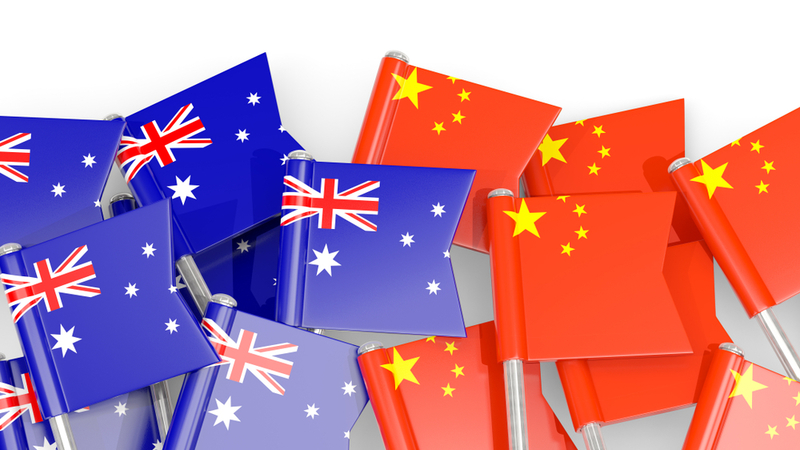There's more to China debate than lackeys versus stooges
February 20 2020

Note: This article appeared in the print edition of The Australian Financial Review on February 20 2020.
In the debate about how Australia should manage China relations, whose side are you on? Washington’s or Beijing’s? This, in essence, is the way that many contributions, involving commentary, research and events, quickly get framed.
Institutions as well as individuals are assigned mythical proportions for their supposed skewing of the debate in favour of one superpower or the other.
In a Perspective piece in last Saturday's AFR Weekend, several prominent commentators made it clear that they saw the Australian Strategic Policy Institute (ASPI) as a US lackey, working to undermine the possibility of a productive Australia-China relationship.
Former foreign minister Bob Carr accused it of pumping out a ‘one-sided, pro-American view of the world’. Former ambassador to China Geoff Raby homed in on ASPI’s budget being supported by the US military-industrial complex.
Some of ASPI’s China-related research is funded directly by the US State Department, and it has undertaken activities requiring it to register on the federal government’s Foreign Influence Transparency Scheme.
ASPI executive director Peter Jennings shot back that the criticism reflected the organisation had got ‘in the way of the rivers of gold’, a swipe at the ‘panda huggers’ and their allegedly single-minded focus on annual trade worth $250 billion.
At the beginning of this year, I was appointed as the director of the University of Technology Sydney’s Australia-China Relations Institute ([UTS]:ACRI), which has previously been described by commentators as a conduit to ‘promote China’s national interest’ with my predecessor called ‘China’s pawn‘.
Without a hint of irony, given the criticism directed at ASPI, Jennings has said that because ACRI previously received funding from Chinese sources, ‘we can be sure’ it will ‘relentlessly’ advocate for Australia to reset diplomatic relations with China in ways that Beijing would approve.
But there’s an alternative way Australia’s China debate can unfold. Sure, insist on transparency in the funding of research or anything else, but desist with insinuating motives without hard evidence.
And accept that the overwhelming majority of contributions reflect good-faith assessments of Australia’s national interest.
As I see it, if the US State Department wants to pay ASPI to build a database that documents links between China’s universities and its military and security agencies, we should all be grateful. The more information Australian universities have available to them to help manage their China relationships, the better.
But the rigour of such research should be tested and policy recommendations should be subjected to critique.
For example, the ASPI database goes beyond providing data to assigning risk ratings. Shandong University is described as ‘very high risk’ owing to its defence connections.
The University of Melbourne has a school of engineering that prides itself on expertise in defence technologies. It even hosts a lab with Lockheed Martin, a US manufacturer of weapons, some of which are pointed at China. Should the Chinese government and university administrators regard the University of Melbourne a very high-risk partner?
And when Jennings says that the Australian Research Council's (ARC) allocation of $262 million in five years to projects involving Chinese organisations speaks to a ‘shocking failure of due diligence’ and ‘the appalling naivety of the Australian research community’, he should be challenged to back up such a massive slur with facts.
ARC grants are allocated through an independent and competitive process that rewards the best science. And the funded research is subject to Defence Trade Controls, designed to protect the national interest from technology leakages.
ACRI research shows that China is now Australia’s leading research collaborator by the number of co-authored scientific publications, so it’s hardly surprising that some Australian government funds support this vital knowledge creation.
Universities understand they need to be mindful of security risks and this is why they worked with security agencies last year to devise best-practice guidelines for guarding against foreign interference.
There is one issue related to funding that is relevant to Australia’s China debate but it’s got nothing to do with the Americans or the Chinese. The federal government puts up big dollars to support work in the strategic and security space. This is seen in the $4 million a year the Department of Defence injects into ASPI, and the $3 million a year channelled into the United States Studies Centre and the Perth USAsia Centre.
And so if newspapers are full of commentary and news stories on research that seems to view the China relationship predominantly through the lens of security and the US alliance, there’s nothing sinister about this. This is where taxpayer dollars are being directed.
Maybe the new National Foundation for Australia-China Relations, which has been touted by the Department of Foreign Affairs and Trade, and is being set up to provide grants to Australian business, cultural, sporting and education sectors, will raise the profile of other perspectives.
Professor James Laurenceson is Director of the Australia-China Relations Institute at the University of Technology Sydney.

